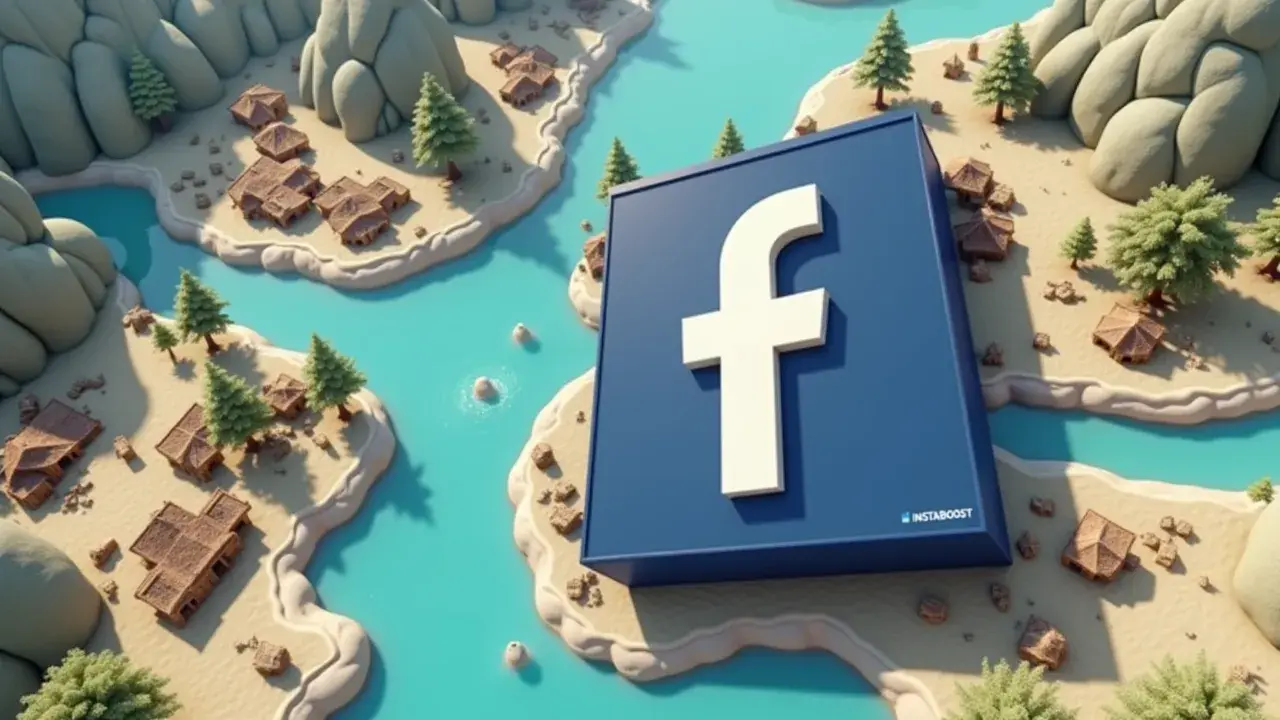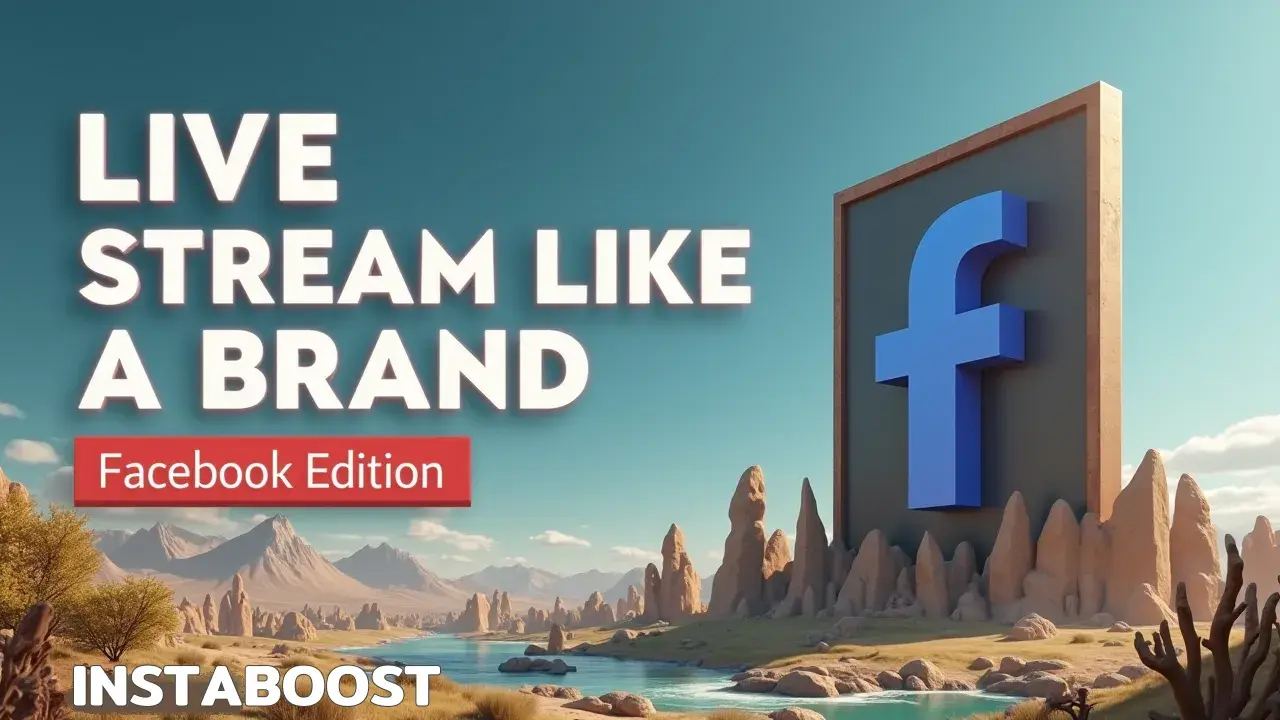How To Live Stream Like a Brand on Facebook?
Branded Facebook Live streaming can build a loyal, interactive audience when planning and engagement align. Outline objectives, formats, and timing before going live, then use real-time comments and reactions to shape the session and keep viewers involved. Results can stall if planning is thin or feedback is ignored, but steady interaction and clear structure keep momentum. Aim for consistent, on-brand sessions that measure engagement to refine what resonates.
Why Facebook Live Streams Deserve a Brand-Level Strategy
When you start thinking of Facebook Live streams as part of what your brand stands for, not just a one-off experiment, it changes the way people experience what you share. It’s not about hitting “go live” because you feel you should. Instead, you treat each stream as a chance to offer something real to the people watching – something that feels worth their time and attention. That shift in approach matters more than it might seem. A planned-out Live video isn’t about chasing reactions as much as it is about giving people a clear reason to tune in and maybe stick around for the next time.
That’s where details come in – things like making sure your message is easy to follow, your visuals look familiar from stream to stream, and your pace is steady so viewers aren’t left guessing what’s going on. It’s also worth noticing how Facebook’s algorithm tends to highlight live streams where people genuinely interact, so a thoughtful broadcast can end up reaching folks you wouldn’t have expected.
When you start seeing your live videos as part of your bigger brand story – something that builds a track record others can trust – it opens up more chances to connect, much like when you find ways to level up on Facebook without really thinking about it. And in the end, the steps that big brands use aren’t really out of reach for smaller teams or solo creators. Things like consistency, clarity, and sticking to a regular schedule can make a real difference in how people see you, sometimes in ways that don’t show up right away.
When you start seeing your live videos as part of your bigger brand story – something that builds a track record others can trust – it opens up more chances to connect, much like when you find ways to level up on Facebook without really thinking about it. And in the end, the steps that big brands use aren’t really out of reach for smaller teams or solo creators. Things like consistency, clarity, and sticking to a regular schedule can make a real difference in how people see you, sometimes in ways that don’t show up right away.

What Failure Taught Me About Live Streaming Credibility
I’ve honestly learned more from messing things up than from reading tips or guides. When I started doing Facebook Live, I thought it was all about looking confident and knowing everything, so I talked at the camera like I was giving a lecture. But every time a stream fell flat – awkward silences, people dropping off, barely any comments – I started to realize that having a title or talking a lot doesn’t mean people trust you.
I had to build it up, stream by stream. Things felt different when I stopped trying to put on a show and started showing up to actually talk to people. I made a point of going live at the same time, answering questions as they came up, and not pretending things were perfect when they clearly weren’t. If something glitched or I didn’t know an answer, I’d say so. After a while, people started coming back, and they’d share the video or bring someone along. I watched brands like INSTABOOST and noticed they weren’t just cranking out posts; they kept showing up, responding to people, and sticking with the same tone every time.
And while I know some creators buy followers for Facebook profiles, the trust these brands built wasn’t from one big moment, but from showing up and being real over and over. If you’re trying to make Facebook Live matter, I don’t think you need a script or a big plan. It seems to come down to being present with whoever turns up, and not worrying so much about getting everything right. It’s more about being there and seeing what happens.
Rethinking Your Facebook Live Game Plan
Feeling comfortable with your approach probably means you’re not really pushing into strategy at all. With Facebook Live, it’s not about following a checklist or sticking to a detailed script. It’s more about being open to changing things up, even if that means going off-plan when something in the moment calls for it. I’ve noticed that a lot of people treat going live as a routine task, hoping it’ll boost their numbers, but they don’t really look at what’s actually happening once the broadcast starts.
The businesses and creators who do well with live streams seem to treat each session as a test run. They’ll ask the audience questions, share an idea that might not be fully formed, and actually watch for real reactions – like if people start dropping off, or if the comments are all about something you hadn’t planned to cover. Sometimes, they’ll change topics halfway through if the original plan isn’t clicking, or slow down to explain something if the chat seems confused. It reminds me a bit of how some people focus on things like comment likes for Facebook promos, hoping for a quick boost, but miss the bigger picture of what’s happening live.
That’s the kind of flexibility that matters more than any plan. If you pay attention to which topics get people involved, when the energy shifts, or when people seem checked out, it gets easier to understand what your audience actually wants. It won’t always be comfortable, and it doesn’t get easier right away, but noticing those small signals during a live stream is how you start to figure out what works for your brand – while everyone else might be looking for a shortcut.
Why “Just Be Yourself” Isn’t Enough on Facebook Live
I’ve honestly stopped counting how many times this hasn’t worked out. Early on, I thought the main thing with Facebook Live was to show up, be yourself, and everything else would fall into place. But after trying it a few times, it’s pretty clear that just being there without much of a plan can make things feel awkward or even a little empty.
People watching notice more than we might expect – they’re not only interested in seeing someone “real,” but they also want to know there’s a reason behind the stream. That’s something I missed at first. A lot of brands, too, seem to think that if you’re authentic enough, people will trust you and start following.
But it doesn’t really work like that. The people who actually build something meaningful with their streams are usually the ones who think about how to connect with viewers, who watch the comments for feedback, and who pay attention to the mood they’re setting. It’s not about pretending or reading from a script; it’s more about noticing what viewers want and need from you while you’re live. Are people asking questions, are they dropping off, does it feel like anyone’s unclear about what’s happening? If you ignore those things, it’s easy for viewers to lose interest and move on. I’ve even seen people try different tactics – some experiment with formats, others buy Facebook video views – and over time, it starts to make more sense that if you want people to care about your Facebook Live, it helps to be open to what people are telling you in the moment, and to treat every bit of feedback as something you can actually use. That’s the difference between those streams that just sort of fade away and the ones people actually remember later – or maybe even come back to.
Turning Engagement Into Enduring Community
Coming up with what to say next is always a bit of a challenge. On Facebook Live, brands often seem focused on how many Likes or comments pop up while they’re streaming, like that’s the whole point. But those reactions are really just the beginning.
What tends to matter more is what you do after the broadcast ends. The brands people remember are the ones that stick around – they answer questions, notice returning viewers, and make it clear that comments were actually seen. Sometimes that’s responding to a question you missed during the stream, or bringing up a viewer’s idea the next time you go live. Even just saying someone’s name or mentioning something they shared can make a difference. People notice that kind of thing. It stops feeling like a one-time show and starts to become something ongoing.
Facebook itself seems to encourage these kinds of interactions, so making the effort to talk with people – not just at them – usually means your posts end up in front of more people, and shares help keep the conversation going. If you’re thinking about live streaming as something you’ll keep doing, it probably helps to see your viewers as people you might want to get to know, instead of just numbers on a screen. Tools like INSTABOOST can make it simpler to keep up with replies and follow-ups, but even with that kind of help, the main thing is still to actually connect. That’s usually what gets people to come back, even after the video isn’t new anymore...
Measuring Success Beyond the Like Button
A lot of people look at the number of Likes or emoji reactions on their Facebook Live streams and use those as their main measure of success. It’s easy to see why – that feedback is right there, immediate and visible. But honestly, those numbers don’t tell the full story.
What I’ve noticed is that brands pay more attention to what happens after the stream ends. They care about what those in-the-moment interactions actually turn into, over time. For example, someone might leave a thoughtful comment on your next post, or they might send you a direct message because what you said stuck with them.
Brands also notice things like whether people share the video with someone, save it to watch again, or follow up on something that was mentioned – those kinds of actions show that the stream actually meant something to viewers. There’s also the subtle ways people expand engagement through Facebook emojis, which can sometimes spark bigger conversations or signal a deeper reaction than words alone. If you want to take the same approach, it helps to think of each live broadcast as the start of an ongoing conversation, not the conclusion. The aim is for what you share to be meaningful or useful enough that people remember it, bring it up later, or come back to your page for more.
Tracking that kind of impact isn’t always straightforward – Facebook’s Insights tool can help, and some people use outside tools like INSTABOOST to notice patterns and see how things change over time. In the end, brands see that real success on Facebook Live isn’t just in counting up the Likes. It’s more about making broadcasts that actually matter to people, enough that they want to come back again.















